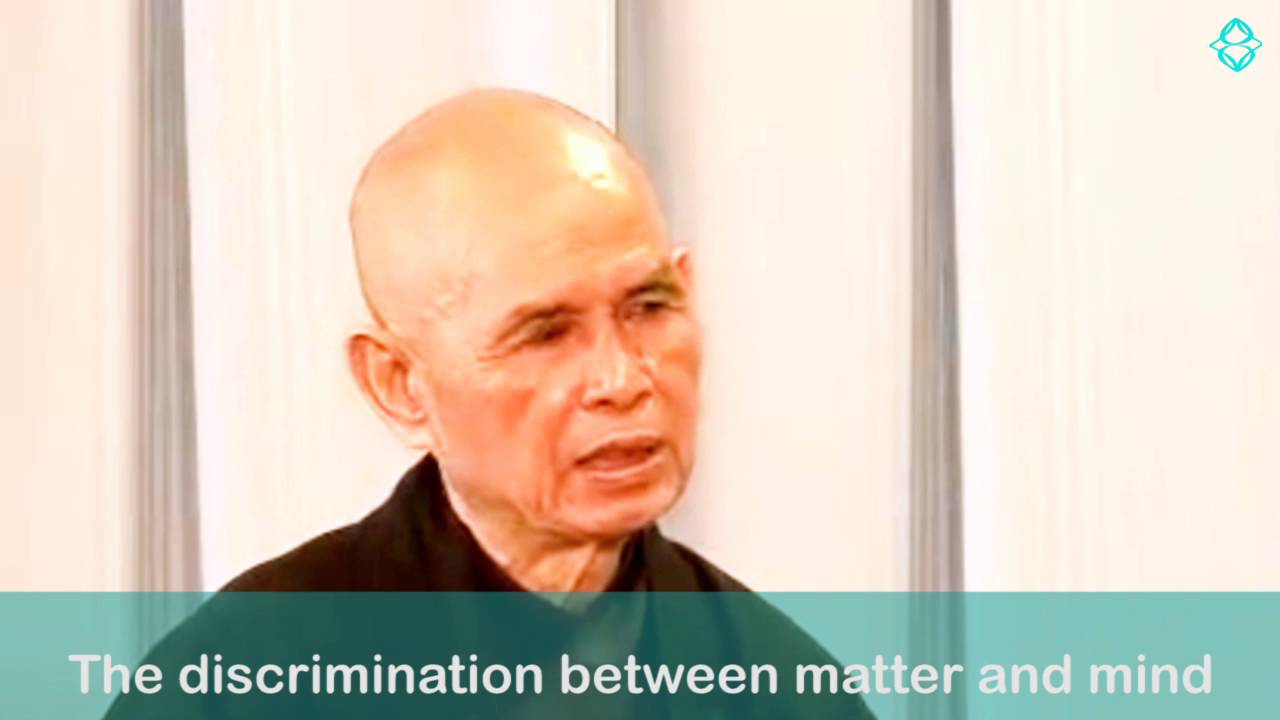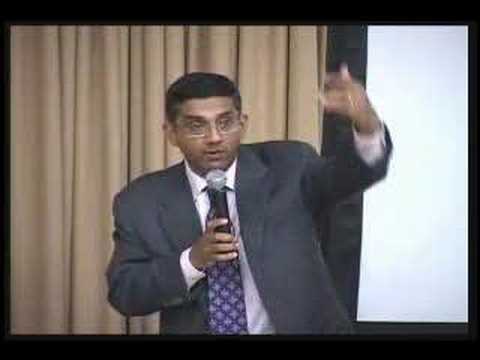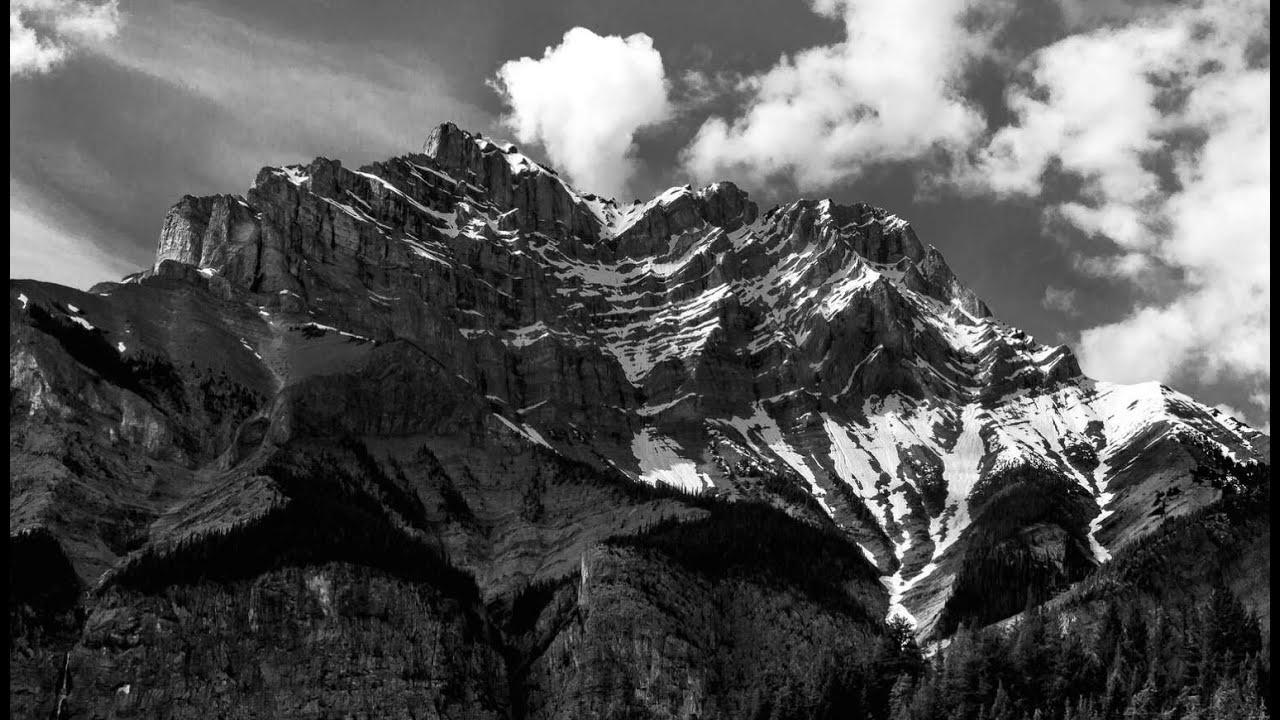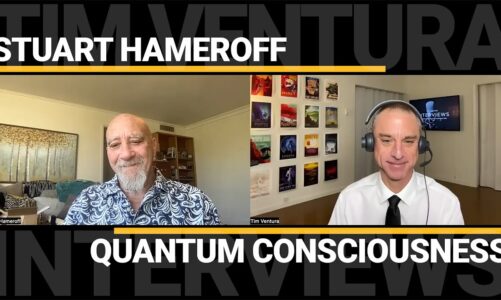Bart Georgi Chashymie
“With the mind of discrimination, we cannot touch the ultimate reality, and quantum physics begins to see that, to feel that.” – Thich Nhat Hanh
Modern science demands the liberation of mind and feeling from dualistic notions – the either-or thinking of being V non-being; self V other; left V right; matter V consciousness – according to Zen Master Thich Nhat Hanh.
Video extracts from the full talk and dialogue: https://www.youtube.com/watch?v=7eSuUDzwAWs
http://www.iamhere.life
To see these videos in your Facebook feed, join up to the I AM HERE Community on Facebook: https://www.facebook.com/perception101/
Source




Consciousness is shuamgama samadhi
Oh my, such wisdom/truth in the talk and then in comments. ?
they say if mind and matter merges means when there is no mind matter also doesn't exist.but as per Hindu concept ,knower of this phenomenon always remain conscious and self evident.and there fore his instrument of knowing(mind) goes but awareness remains .
–Thich Nhat Hanh The Buddhist Understanding of Reality.
We study this line: “Both subject and object of perception manifest from consciousness according to the principle of interbeing.” This expresses an understanding of deep Buddhism. The question of whether we continue to be after the disintegration of this body has been asked by so many people. And there are many ways to answer, according to our capacity to understand. There are at least two kinds of Buddhism. Those who practice popular Buddhism are practicing more devotion than meditation, so their understanding of rebirth is quite different. But to answer this question satisfactorily, you have to use the understanding given by deep Buddhism, the understanding that is in accord with science.
We usually believe that consciousness is something inside of us, and we go and look for the world outside. We think there is an objective world outside and there is a subjective world inside. Remember when we read from “Winnie the Pooh”? Winnie the Pooh thought he saw the footprints of a hostile animal, and he became afraid. But with the help of Christopher Robin, Winnie the Pooh discovered that the footprints he found on the snow were his own footprints! The same thing is true with the object of our inquiry – the so-called objective reality of the world. We think it is something distinct from our consciousness, but in fact, it is only the object of our consciousness. It is our consciousness. That’s the hardest thing to understand and a basic obstacle for us and for science. Now a number of scientists are beginning to understand this concept. The British astronomer, Sir Eddington, said that on the unknown shore we have discovered footprints of unknown people, and we want to know who has been there before us. We come, inquire and investigate, and we find that they are our own footprints.
The world outside is our consciousness is us. It is not something separate and distinct. The object and the subject of perception inter-are. Without the subject, there is no object; without the object, there is no subject. They manifest at the same time. To see means to see something. The seer does not exist separately from the seen; they manifest at the same time. If you imagine that the seer is independent and goes out in order to see the seen, that is a mistaken perception.
The Nature of Consciousness
Consciousness is always consciousness of something, and consciousness only lasts a millisecond. Consciousness is like an elementary particle, like an electron; its nature is non-local. Nonlocality is a word used by scientists about time in quantum physics. An elementary particle can be everywhere at the same time. We think that one thing cannot be several places at once, but scientists have agreed that an elementary particle – an electron – can be both here and there at the same time. It can be both this and that at the same time. It can be you, it can be me.
Many philosophers and scientists have said that the nature of consciousness has a cinematographic nature. A film is made up of separate pictures that last only a fraction of a second. Consciousness is like that, it just lasts one millisecond. Then, because moments of consciousness succeed each other continuously, you have the impression that consciousness is something that lasts. But the notion of a permanent consciousness is an illusion, not reality. Consciousness is only a flash.
It’s like a flame on the tip of a candle. You think there is one flame, but really there is a succession of millions of flames, one after the other, that give the impression that it is only one flame. The flame of this moment gives rise to the flame of the next moment, and the flame of the next moment gives rise to the flame of the next moment. Things exist only in one millisecond. And that is true not only with consciousness; it is also true with our bodies because cells die to give rise to other cells. In a month, all our cells will be new cells. It’s like a river. We see a river and call it one name, but the water is not the same water, it’s always changing. You cannot swim twice in the same river, and it is not the same person who goes into the river. Tomorrow it will not be “you” who goes into that river. You will have changed, just like the river constantly changes.
Buddhism offers the example of someone holding a torch and drawing a circle in the dark. Since he moves the torch quickly, you have the impression that there is a circle of fire. But in fact, there is only one dot of fire. Everything is fleeting and impermanent. Modern science acknowledges this.
No-Self and Samadhi
Science is now capable of demonstrating no-self. Neuroscience teaches that neurons communicate with each other very well, and they operate together without a leader or a boss. They are like an orchestra playing beautiful music without a conductor. Our bodies are made of many cells and there is coordination among the cells; they don’t need a president of all the cells in order to make decisions. There is no-self.
If a scientist knows how to maintain that insight on life, then that flash of insight will become a liberating factor. If you just accept that idea as a notion, that is not enough to liberate you from your fear, your desire, your despair. No-self and impermanence as notions are not very helpful. You need to maintain a long-lasting understanding in order to get liberation. That is why samadhi has been translated, “you maintain it like that.” You keep the insight alive and you make it last. In your daily life, you are able to maintain the vision of impermanence, the vision of no-self as a living experience. Only that insight can liberate you from fear, from anger, from separation. It is like when you boil potatoes, you have to maintain the fire underneath them for at least twenty minutes for the potatoes to cook. If you light the burner and then you turn it off, you will never have cooked potatoes. Samadhi is like that. Samadhi is the concentration needed to maintain the steady presence of that insight. Scientists are capable of finding no-self and impermanence, but what they need is samadhi to maintain that understanding throughout the day. They need the tools of mindfulness, concentration, and samadhi, in order to discover more. It would be helpful to have practitioners of meditation and scientists to collaborate, in order to discover more about ourselves.
You can be sure that the world is an object of mind. The sun, the moon, the earth, the cosmos, the galaxies – they are all objects of mind. And our body, also, is an object of our mind. And our mind, also, is an object of our mind. That is why we can investigate the object of our mind. When we understand the object of our mind, we understand our mind, because of mind and object of our mind inter-are. One cannot be without the other.
When we believe that consciousness is permanent, and only the body perishes, that the soul continues and goes to heaven or hell, that is eternalism. A right view should transcend a view of eternalism. A permanent, immortal soul is something that cannot be accepted, either by good Buddhists or good scientists. But the opposite view – that after this body disintegrates, you disappear altogether, is another extreme, another wrong view, called nihilism. As a student of Buddhism, you are not caught in either of these views. There’s only continued manifestation in different kinds of forms; that is rebirth, continuation, in the context of impermanence and no-self. Good scientists see that nothing is born and nothing dies.
Being a Cloud
Suppose you are a cloud. You are made of tiny crystals of ice and water and you are so light, you can float. And maybe floating as a cloud, you encounter a block of hot air so you become drops of water and fall as rain. You go down, you come up again, you go down, and you come up again. Transmigration, reincarnation, rebirth is always taking place in a cloud. And yet a cloud does not need to become rain in order to have a new life. A cloud has a new life every moment. Rebirth, continuation takes place with us in the same way.
There is a lot of cloud in us, and we continue to drink cloud every day. Birth and death are taking place in every moment of our daily life. We should not say, “I will die in twenty years, in thirty years;” no, you are dying right at this moment and you are reborn right at this moment. Rebirth is happening in the here and the now – not in the future. So when someone asks you, “What will happen to me when I die?” Ask him or her, “What happens to you in the here and the now?” If you know what happens in the here and the now, you can answer the first question very easily. You are undergoing birth and death right now because mentally and physically you are of a cinematographic nature. You are renewed in every instant, and if you know how to do it, your renewal is beautiful.
Divine Chaos
The Dance of the Bees. -Thich Nhat Hanh
When a worker bee finds a hillside covered with flowers, she flies back to the hive to tell her mates exactly where the flowers are, and she does it with a dance. She can even tell them of places quite far away. Karl von Frisch revealed this to us after studying the language of the dance of the bees. We humans also know how to dance. Some of us dance with our bodies, others with painting or music. Even our spoken and written words are no more than the steps of a dance, the notes of a song, the strokes of a painting. They may be more or less skillful. They may translate our vision poorly or well. The skill is not only in the hands of the artist or the words of the speaker; the listener too must be skillful and perceptive. With words it is especially difficult to escape from conceptual categorizations; and even if the speaker skillfully avoids them, the listener can still fall into their traps. Remember the empty bottles? They had definite shapes and sizes even before being filled. People who practice Zen often advise not using words. This is not to discredit words, but to avoid the danger of becoming stuck in them. It is to encourage us to use words as skillfully as possible for the sake of those who hear them.
In the second century, Nagarjuna wrote the Madhyamaka Sastra, in which he used concepts to destroy concepts. He was not trying to create a new doctrine, but to break all the bottles, all the flasks, all the vases, all the containers, to prove that water needs no form to exist. He outlined a dance for us, a dance for us to drop our categories and barriers so that we can directly encounter reality and not content ourselves with its mere reflection.
Knowledge Is a Barrier to Understanding.
The great discoveries of science are the result of understanding rather than thought. Scientists’ tools are not just their intellect and laboratory; their whole being down to its depths is hard at work. Intellect prepares the soil of the mind and sows the seeds there. Until the seeds sprout, intellect can do no more. To try would only be floundering in a void. Then, at unexpected moments, the seeds send shoots up into the intelligence. These moments usually come because the scientist has “hatched” them. He or she has “sat” on the problem while awake, asleep, eating, walking, until suddenly a solution! The new discovery breaks the old knowledge, and the intellect is forced to destroy today’s structures to build tomorrow’s. Old knowledge is the obstacle to new understanding ; Buddhism calls it “the barrier built of knowledge.” Like those who are awakened, great scientists have undergone great internal changes. If they are able to achieve profound realizations, it is because their powers of observation, concentration, and awareness are deeply developed. Understanding is not an accumulation of knowledge. To the contrary, it is the result of the struggle to become free of knowledge. Understanding shatters old knowledge to make room for the new that accords better with reality.
When Copernicus discovered that the Earth goes around the sun, most of the astronomical knowledge of the time had to be discarded, including the ideas of above and below. Today, physics is struggling valiantly to free itself from the ideas of identity and cause/effect that underlie classical science. Science, like the Tao (the Way), urges us to get rid of all preconceived notions. When Shakyamuni Buddha put forth the notion of “no self,” he upset many concepts about life and the universe. He blasted our most firm and widespread conviction—that of a permanent self. Those who understand “no self ” know that its function is to overthrow “self,” not to replace it with a new concept of reality. The notion of “no self ” is a method, not a goal. If it becomes a concept, it must be destroyed along with all other concepts.
Thich Nhat Hanh "The Sun My Heart"